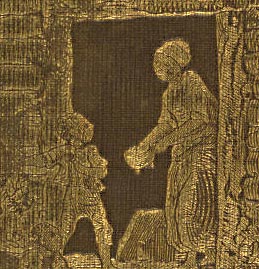
Uncle Tom's Cabin
![]()
In 1850, Congress enacted the Fugitive Slave Law, which permitted slave
owners to apprehend and recover their “property” from free
states without process of law. Abolitionists fought the law, which angered
even moderate Northerners. In response, Harriet Beecher Stowe began work
on what would become one of the best-known, most hotly-debated, and most
enduring pieces of fiction in American history. Stowe’s highly sentimental
and melodramatic tale, Uncle Tom’s Cabin, was first published
in forty serial issues of the abolitionist weekly the National Era
beginning in June of 1851. It was published as a two-volume book by John
Punchard Jewett in March of 1852. The story’s scathing indictment
of slavery’s cruelty evoked horror in the North, and outrage in
the South over what Southerners perceived as an unfair condemnation of
their “peculiar institution.”
Uncle Tom’s Cabin was one of the most contested novels of its time. Initially, the novel was criticized by whites who thought Stowe’s portrayal of black characters was too positive, and, later, by black critics who believed these same characters were oversimplified and stereotypical. Uncle Tom’s Cabin also gave birth to the racial epithet “Uncle Tom,” which is still an insult today.
Despite the criticisms and controversies surrounding the novel, Uncle Tom’s Cabin transcended its fictional genre, and brought the urgent issue of slavery’s brutality into the homes of white Americans. It galvanized many into becoming abolitionist sympathizers, if not activists themselves.
![]()
| |
| |
| |
| |
| |
| |
| |
| |
| |
| |
| |
| |

Copyright
© 2002 Division of Rare & Manuscript
Collections
2B Carl A. Kroch Library, Cornell University, Ithaca, NY, 14853
Phone Number: (607) 255-3530. Fax Number: (607) 255-9524
For
reference questions, send mail to:
rareref@cornell.edu
For questions or comments about the site, send mail to: webmaster.